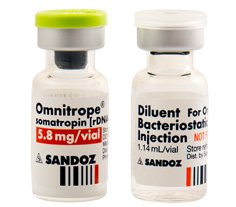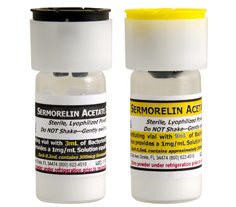Low Testosterone – Warning Signs and Treatment

Doctors often recommend vitamins to their patients who do not get enough good nutrition, are getting older, or who are vitamin deficient, but they do not discuss replenishing dwindling hormone levels such as testosterone with most people. Why is that? Most family practitioners are not familiar enough with hormone levels and deficiency. They do not recognize the warning signs of low testosterone and other forms of chemical decline such as low progesterone, estrogen dominance, and growth hormone deficiency. Instead of running a battery of unnecessary tests, contacting a doctor who specializes in hormone replacement therapy can often get you to the root of the problem sooner rather than later – and for a lot less money.
What is low testosterone and how does it occur?
Low T is a valid medical condition that begins at different times in men and women. Males start to experience a slow decline in testosterone production as early as the age of thirty. At this point, the testes begin to decrease testosterone output by one to two percent each year. Those on the lower end of the spectrum may not notice a change for twenty or thirty years, or more, depending on their lifestyle habits. Other males, those who lose up to two percent of testosterone each year, may be dealing with twenty percent less by the age of forty, and already starting to see a change in their bodies.
What are the causes of low testosterone for females? Women start to experience this decline during menopause when the ovaries cease their production of testosterone, estrogen, and progesterone. This also occurs in situations of oophorectomy – where the ovaries are removed surgically. Since only small amounts of testosterone and progesterone come from the adrenal glands after menopause, but belly fat aids in the production of estrogen by converting any free testosterone into estradiol, many women (and even men dealing with Low T) experience a condition called estrogen dominance that further creates havoc in the body by throwing these vital hormone levels out of balance.
Symptoms of Low Testosterone
By identifying the low testosterone symptoms in the body, a hormone specialist can prescribe a customized treatment plan that will enable that crucial balance to return to the body. These changes can interfere with mental functions, productivity, drive, libido, the structural integrity of the body, metabolism, sleep, and even hair growth.
The symptoms of low testosterone in women are essentially the same as with males with the exception of how Low T affects sexual aspects of the individual. Females often see a decrease in vaginal lubrication when their testosterone levels decline. Just as with men, they tend to lose sexual desire, suffer from a reduction in arousal, and notice a severe drop in satisfaction.
When it comes to low testosterone in men, decreased sperm count, infertility, testicular shrinkage, and erectile dysfunction may also be present. Both males and females may also notice any of the following symptoms of Low T:
- Loss of muscle tissue mass
- Reduced strength
- Decreased bone density
- Joint pains
- Limited mobility due to bodily stiffness
- Trouble with focus, memory, and completing mental tasks
- Lack of energy
- Reduced endurance
- Depression
- Mood swings or changes
- Anxiety
- Social isolation
- Sluggish metabolism
- Weight gain
- Hair loss from head
- Increased facial and body hair growth
- Insomnia and other sleep issues
- Sleep apnea
- High cholesterol and triglyceride levels
Treatment Options for Low Testosterone
The good news is that there is a simple way to provide low testosterone treatment to both men and women suffering from the effects of Low T. This is where the biggest difference between the genders comes into play. Males naturally have a much higher level of testosterone in their bodies than females, and their needs are typically greater, as well.
When women require treatment with supplemental testosterone, low dose, custom compounded cream is often the best option. Once the hormone specialist determines the severity level of the decline, calculating the ideal dosage is the next step. That information is sent to a compounding pharmacy in the US for preparation.
For men with Low T levels, there are multiple options. The most widely used and recommended is testosterone cypionate injections. Not only is this method of treating low testosterone the most effective, it is also the lowest in cost and carries a reduced frequency of administration. Other options for men diagnosed with Low T include testosterone enanthate injections, testosterone patches, testosterone gel, and transbuccal testosterone applied to the gums.
To discuss your options for the treatment of low testosterone, to inquire about blood testing, or for answers to any questions you have about testosterone or other forms of hormone replacement therapy, please contact the specialists at Kingsberg Medical for a confidential consultation at no cost.
Brian Leeber



















